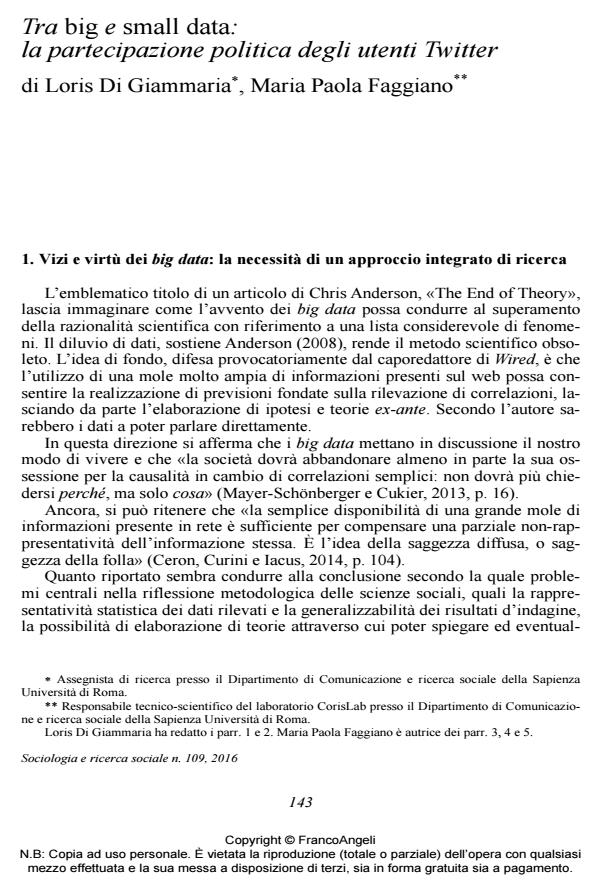Between Big and Small Data: Political Participation of Twitter Users
Journal title SOCIOLOGIA E RICERCA SOCIALE
Author/s Loris Di Giammaria, Maria Paola Faggiano
Publishing Year 2016 Issue 2016/109
Language Italian Pages 16 P. 143-158 File size 81 KB
DOI 10.3280/SR2016-109012
DOI is like a bar code for intellectual property: to have more infomation
click here
Below, you can see the article first page
If you want to buy this article in PDF format, you can do it, following the instructions to buy download credits

FrancoAngeli is member of Publishers International Linking Association, Inc (PILA), a not-for-profit association which run the CrossRef service enabling links to and from online scholarly content.
This article aims to show how an approach with a mixed method orientation, combining big and small data, can be fruitfully used to study political participation. The limits of using exclusively of Big Data downloaded from the web (in particular from Twitter) can be partially overcome through a pluralist methodological approach. This case of empirical research, a web survey conducted during the campaign for the parliamentary elections in 2013, highlights the value of this approach in the study of political participation, online and offline, in relation to all its conceptual dimensions, as well as to other social phenomena.
- Big Text Corpora & Mixed Methods – The Roman Five Star Movement Blog Loris Di Giammaria, Maria Paola Faggiano, in Bulletin of Sociological Methodology/Bulletin de Méthodologie Sociologique /2017 pp.46
DOI: 10.1177/0759106316681088
Loris Di Giammaria, Maria Paola Faggiano, Tra big e small data: la partecipazione politica degli utenti Twitter in "SOCIOLOGIA E RICERCA SOCIALE " 109/2016, pp 143-158, DOI: 10.3280/SR2016-109012